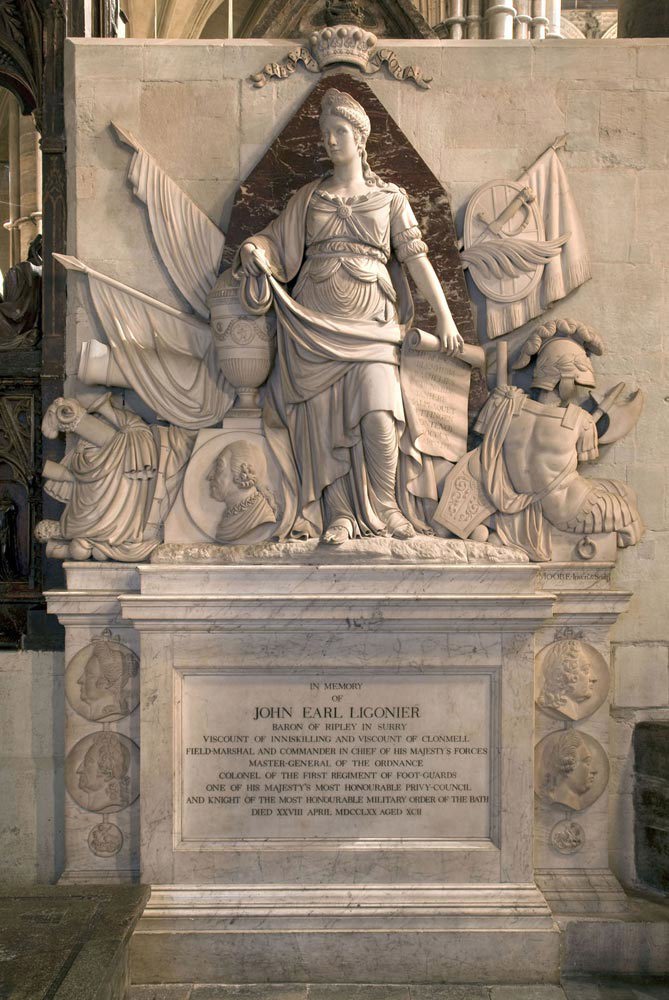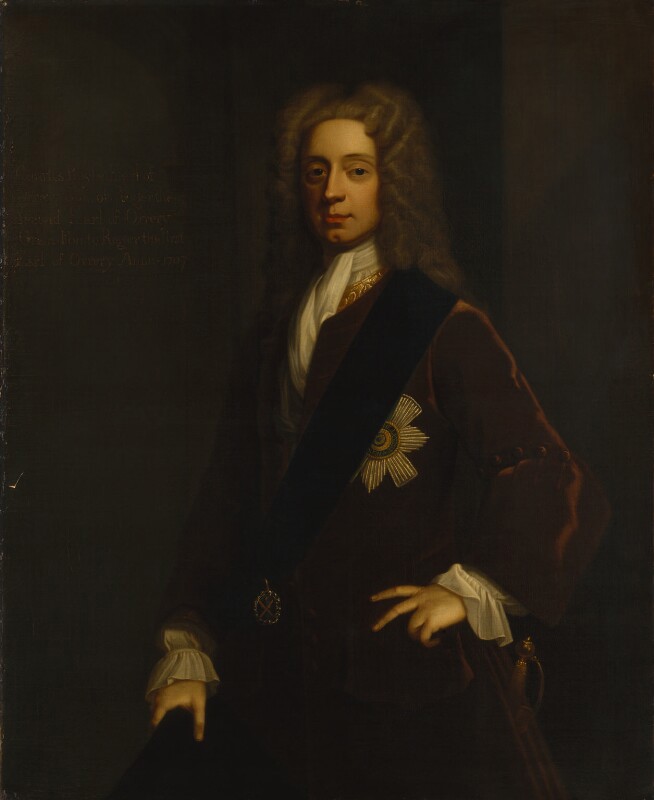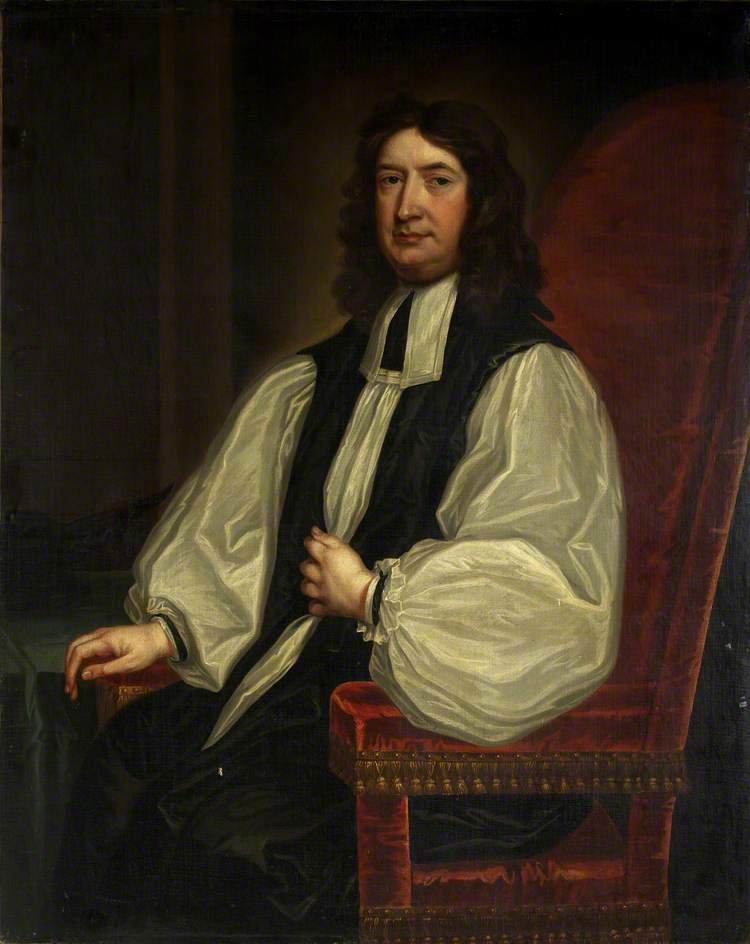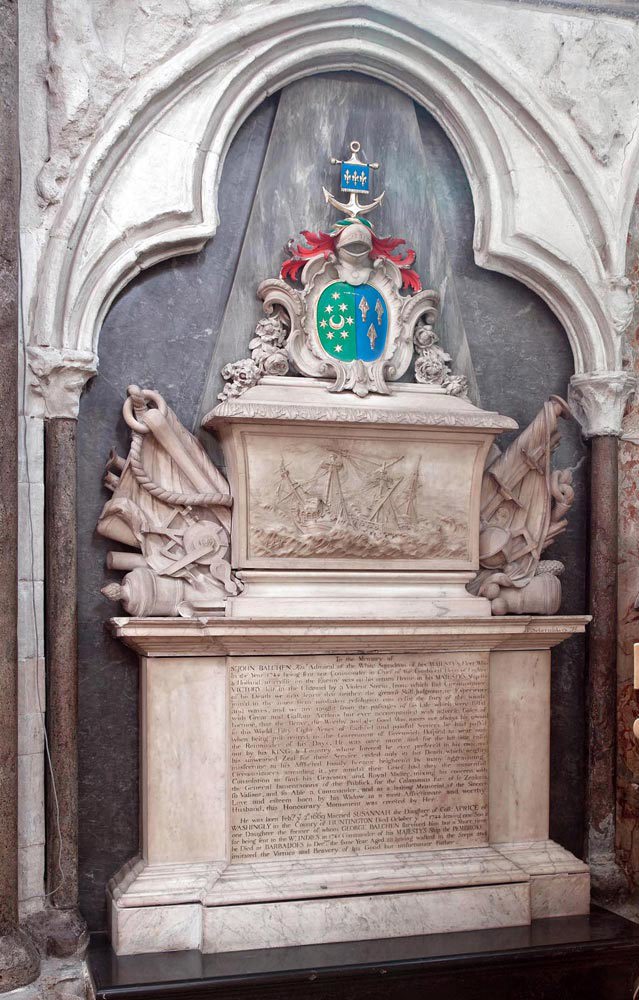Edward Vernon
Edward Vernon has a marble memorial in the north transept of Westminster Abbey, near the entry door. He was born in Westminster on 12th November 1684, son of James Vernon (d.1727) and Mary, daughter of Sir John Buck. He attended Westminster School and entered the navy in 1700. He rose to be Vice Admiral and also served as a Member of Parliament. "Old Grog" was his nickname, alluding to the grogram cloak he used to wear (made of coarse fibres stiffened with gum). The drink of rum diluted with water, which he was first to issue to his men instead of neat spirits, was also known as Grog. In 1729 he married Sarah (1699-1756), daughter of Thomas Best and they lived at Nacton, near Ipswich, Suffolk. All three of their children pre-deceased them. Edward died on 30th October 1757 and is buried with his wife at Nacton.
Monument
His nephew Francis erected the monument for him. The contemporary inscription (not historically accurate) which is recorded on the monument reads:
Sacred to the memory of EDWARD VERNON Admiral of the White Squadron of the British Fleet. He was the second son of JAMES VERNON, who was Secretary of State to King William the III, and whose abilitys & integrity were equally conspicuous. In his youth he served under the Admirals SHOVELL & ROOKE. By their example he learned to conquer; by his own merit he rose to command. In the war with Spain of MDCCXXXIX he took the Fort of Porto Bello with six ships, a force which was thought unequal to the attempt. For this he received the thanks of both Houses of Parliament. He subdued Chagre, and at Carthagena conquered as far as naval forces could carry victory. After these services he retired without place or title from the exercise of publick to the enjoyment of private virtue. The testimony of a good conscience was his reward, the love and esteem of all good men, his glory. In battle; though calm, he was active, & though intrepid, prudent: successfull yet not ostentatious, ascribing the glory to God. In the Senate, he was disinterested, vigilant and steady. On the XXXth day of October MDCCLVII he died as he had lived, the friend of Man, the lover of his Country, the father of the poor, aged LXXIII.
On the pedestal of the bust:
As a memorial of his own gratitude and the virtues of his benefactor, this monument was erected by his nephew FRANCIS Lord ORWELL in the year 1763
The monument was one of the last works of sculptor Michael Rysbrack and shows a figure of Fame placing a wreath (now broken) on the bust of the Admiral. Naval trophies are shown, as well as a Roman breastplate and the club of Hercules. His coat of arms is "or, on a fess azure three garbs of the field" (a gold shield with a blue band across the centre on which are three golden wheatsheafs).
Further reading
Oxford Dictionary of National Biography, 2004
"Precursors of Nelson" edited by P. Le Fevre and R. Harding, 2000
The British Library and National Maritime Museum hold papers and letters of the Admiral

This image can be purchased from Westminster Abbey Library
Image © 2025 Dean and Chapter of Westminster










